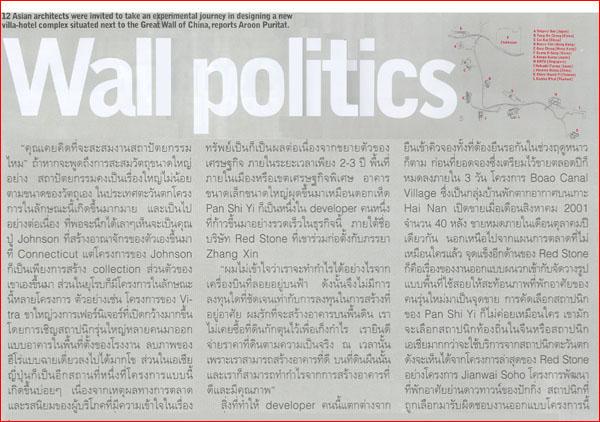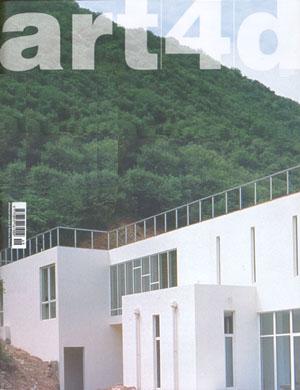
12 Asian architects were invited to take an experimental journey in designing a new villa-hotel complex situated next to the Great Wall of China.
 Have you
ever thought about collecting architectural works together in one place? Architecture
is quite big compared to other objects. Despite the logistics, there are quite
a few architectural project presenting big name architects, which have been
situated on the same site. Commune by the Great Wall is one such project. Initiated
by Beijing-based developer Redstone (owned by a Chinese couple Pan Shiyi and
Zhang Xin), Commune by the Great Wall is a cluster of luxury houses designed
by rising architects from Japan, South Korea, Singapore, Taiwan, Hong Kong,
China and Thailand. The first phase included ll houses and a clubhouse building
and the invited architects were persuaded to interpret and freely explore their
ideas on an area of 8 square kilometers of land.
Have you
ever thought about collecting architectural works together in one place? Architecture
is quite big compared to other objects. Despite the logistics, there are quite
a few architectural project presenting big name architects, which have been
situated on the same site. Commune by the Great Wall is one such project. Initiated
by Beijing-based developer Redstone (owned by a Chinese couple Pan Shiyi and
Zhang Xin), Commune by the Great Wall is a cluster of luxury houses designed
by rising architects from Japan, South Korea, Singapore, Taiwan, Hong Kong,
China and Thailand. The first phase included ll houses and a clubhouse building
and the invited architects were persuaded to interpret and freely explore their
ideas on an area of 8 square kilometers of land.
Shigeru Ban presents 'Furniture House' in which he applies simple bamboo cane matting as a vernacular material. Kengo Kuma's bamboo wall house also uses bamboo to offer a variety in partitioning of space, 'Split House' by Yung Ho Chang has been designed to incorporate the surroundings into the architecture Itself.
Whilst Gary Chang, from Hong Kong, challenges the motion of a definite space. The floor and ceiling of the house he designed also turn into a suitcase. Rocco Yim's design is distorted yet represents the peaceful co-existence of modern and traditional Chinese courtyard homes.
Antonio Ochoa's Cantilever House' is a giant box on the sloping mountain. Cui Kai's See and seen House' lays emphasis on views where the inside is seen from out and the outside is brought in. Singaporean Kay Ngee Tan divides his house into two L-shaped pieces, one larger and one smaller, organizing a loosely defined courtyard space.
Chien Hsueh-Yi, from Taiwan, designs a structure that blends seamlessly with nature for his 'Stone Wall House'. Kanika R'kul, the only woman architect in this project, exposes the spirit of the site in designing her `Wire House'. Nobuyaki Furuya designs a villa in the forested hill beneath the Great Wall with a facade made of glass and bricks.
Seung H-Sang, responsible for the clubhouse, employs earthy colors to the building that seem to get along very well with the surrounding nature.
The Commune by the Great Wall project will be exhibited at the Venice Biennial architecture show. The Great Wall represents a multi-level of Chinese culture, politics, economics and social issues within itself. And, all architects taking part in this project have interpreted this depth in various ways. Like the Berlin Wall, the Great Wall, despite it's age, size, length and history, shares a common aspect in dividing and isolating people and space.
The Great Wall was conceived of by a group of people and it was built by a different group of people, often people who were forced to work on it. There is a tale saying that a woman traveled all the way to look for her husband who was forced to build the Great Wall. When she realized that her husband had died during the construction, she cried so loud that the wall collapsed.
Although, the Great Wall still stands and is manipulated in several ways, however, if one day it was destroyed, its abstract meaning and symbol would still live on for a long time to come.





